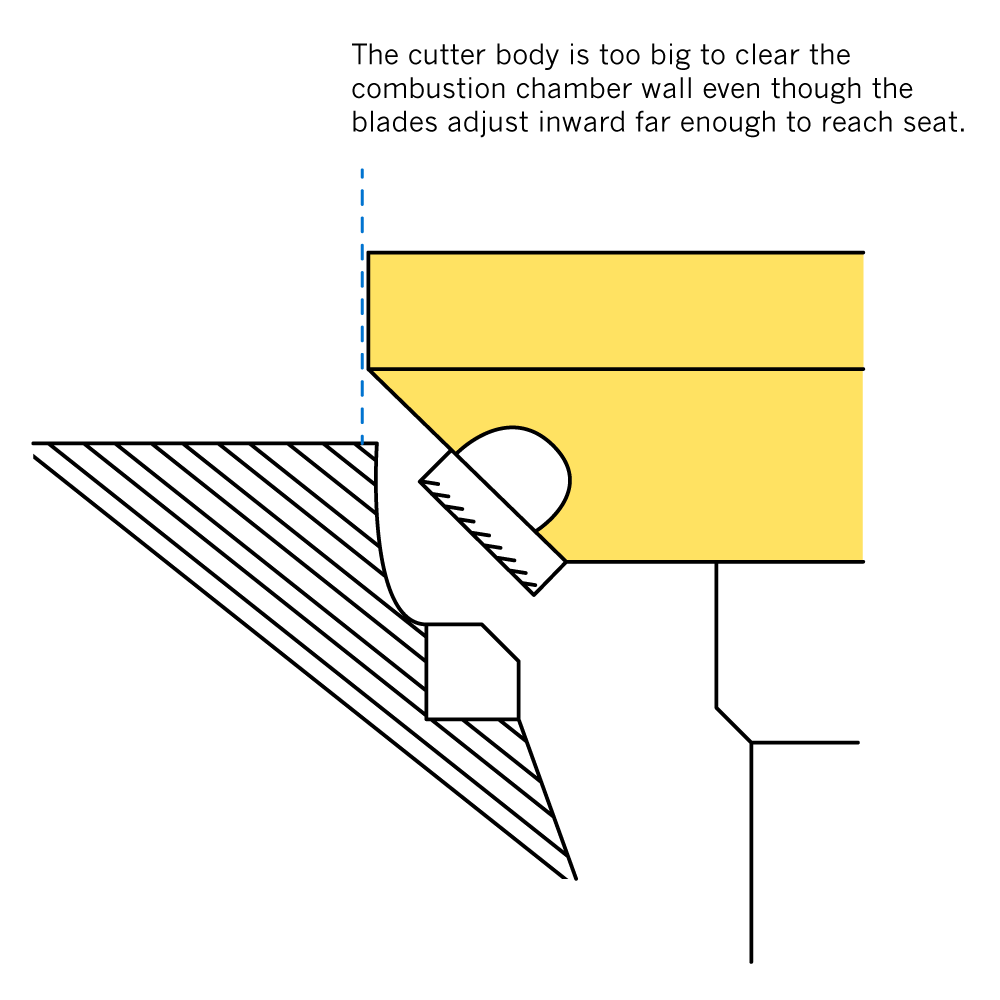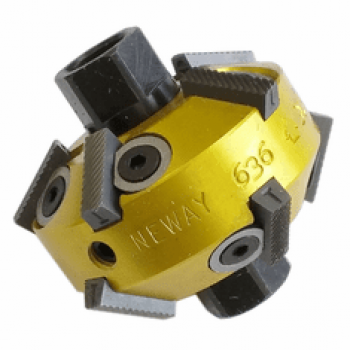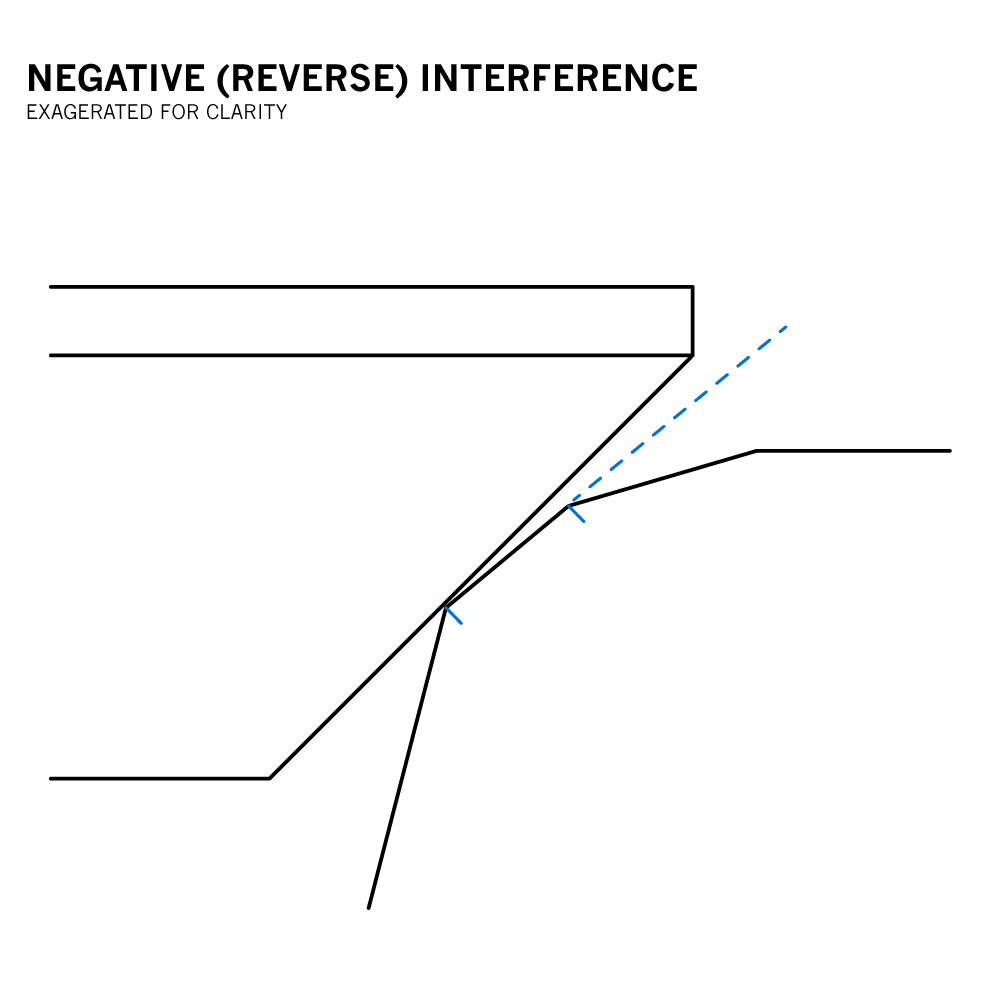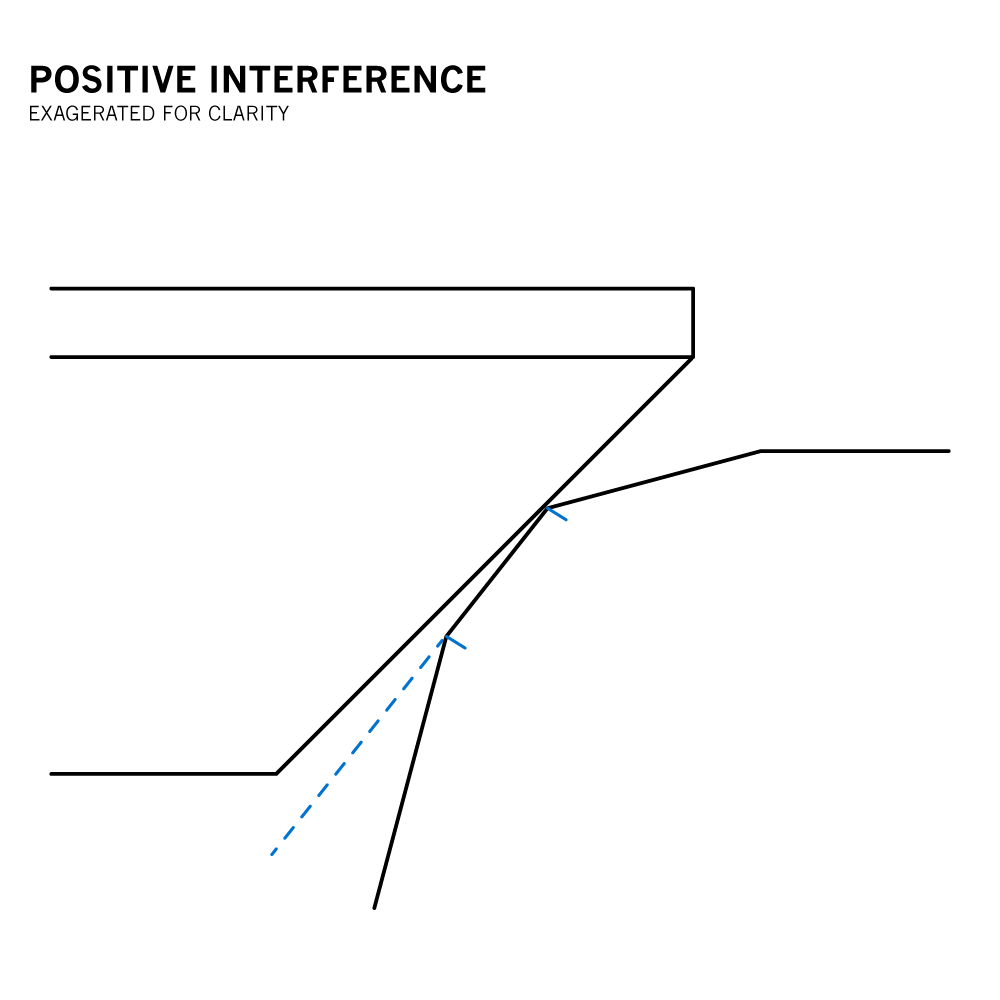Standard Series Valve Seat Cutters
Standard Series Valve Seat Cutters
| Product Code: | Standard Series Valve Seat Cutters |
| Availability: | 1 |
- $0.00
For use with standard series pilots, 0.375" top.
Cutter Heads Available to suit sizes 28.6mm - 63.5mm
- a range of valve seat angles available 15, 30, 45, 60, 70, 75, 80 etc, double sided cutters avilable with 2 different angles.
Come complete with replaceable blades.
Finding the Right Cutter – Longwinded and Detailed
Whether you're looking for cutters to do just one valve seat, or putting together a set of cutters to do a range of engines, the process is basically the same: use the valve size(s) to figure out the appropriate cutter diameter(s), and then look for the correct angles.
So how do we use the valve size to find the right sized cutter? It’s easy, use the Find A Cutter search feature. It will generate a short list of cutters whose operating ranges include the valve size you enter.
Cutter Operating Range
A cutter’s operating range takes into account the likelihood that a combustion chamber wall or some other obstruction may interfere with the cutter body (the yellow aluminum part).
Understanding what we mean by operating range is key to finding the right cutter size, so let’s walk through it. We start with the cutter body diameter, this is our reference point (with one exception, the Fixed Blade Mini Cutters. Cutter body diameter is not relevant for this special little group of cutters). When the cutter body diameter is 1-1/4" or bigger, the blades will adjust outward by 1/8" which enables the cutter to machine to a diameter 1/4" bigger than the cutter body. So, for example, if the cutter body is 1-1/2" the blades can extend out to a diameter of 1-3/4". This is a general rule of thumb, but it's relatively accurate.
The inner operating range is a bit trickier to determine. The actual inward adjustment diameter of the blades is only meaningful when we know the cutter body will be able to fit on to the valve seat, so the amount of clearance around the valve seat area tends to be a more important factor than the actual reach of the blades. In most cases there will be some surface of the cylinder head - typically a combustion chamber wall or a cylinder head deck - that will limit the cutter size. After all, it doesn't matter how far inward the blades can extend if it's not possible to fit the cutter onto the valve seat.

We have found that 1/8" (3mm) is a pretty safe figure to use when you're trying to figure out the inner working range for a cutter. By that we mean there is a very good chance (90%) that the cutter will work even when the valve size is 1/8" smaller than the cutter body diameter. This is the size difference – 1/8” (3mm) - that we use in determining the small side of the operating range. If your particular cylinder head happens to have very generous clearance around the valve seats then you should take that into consideration. It’s quite possible that a cutter that is 5mm or 6mm bigger than the valve could fit just fine if you have plenty of clearance around the seat.
We prefer to use valve size as the reference point because valve size is a term that is clearly understood, whereas valve seat size can mean different things (valve seat insert size? OD of seating surface? ID of seating surface?) The cutter's operating range is always stated with respect to valve size, as in "cutter CU620 (1-1/2" diameter) will work on seats where valve sizes range from 1-3/8" to 1-3/4" " So there's our general rule of thumb that tells you what a cutter can do. Take the cutter body diameter, add 1/4" and subtract 1/8" and that's your general operating range.
When the cutter body is bigger than the valve, the chance of success decreases as the size difference increases. Here are the odds of success when the valve is smaller than the cutter body:
Probability that Cutter Will Fit
- Valve is 3mm (about 1/8") smaller than cutter body 90%
- Valve is 4mm (about .150") smaller than cutter body 70%
- Valve is 5mm (about .200") smaller than cutter body 50%
- Valve is 6mm (.236") smaller than cutter body Less than 50%
These probabilities are not absolute in-stone truth, so please don't drag us into court over them. Every cutter we make has its own page on this website and both the operating range and the actual blade adjustment range are listed on those pages.
The cutter's stated operating range has another consideration baked into it. This one has to do with the role of the specific angle in our 3-angle seat (contact angle or narrowing angle). The following example illustrates the point.
Let's say we have an old air-cooled VW engine and we're going to cut the following three angles; 15 degrees, 45 degrees, 75 degrees. In the case of the 45 degree seating surface the outer diameter (OD) of that surface will be slightly less than the valve diameter, so any cutter that is capable of reaching out to the same size as the valve would be fine. For the 15 degree top narrowing angle the story is different. In this case we will need a cutter that can cut to a diameter that is slightly larger than the valve size, by some amount (we use 2mm (.080") as a general guideline). This calculation is wired into the cutter's operating range. That is, if the blades of a 15 degree cutter will actually reach out to 38mm, the operating range for that cutter will state 36mm as the largest valve.
In most cases you will find that there are two or three different cutter diameters that could work for a given valve size. You will narrow your choices down when you consider the angles that you need.
Single-Sided Cutters vs. Doubled-Sided
As you search through our cutters you will see that we offer both single-sided (one angle only) and double-sided (two-angled) cutters. Double-sided cutters offer the convenience of having two angles on one tool while single-angled cutters make it possible for you to purchase just the angle you need without having to pay for a second angle on the opposing side of the cutter (cutter pricing is based on the quantity of carbide blades on the cutter). Since you will need the ability to cut three angles you may wind up with three single-sided cutters, or one double-sided cutter and one single-sided cutter. It really makes no difference either way, the mission here is simply to cover our size range with the three angles we need.
When there are multiple cutters to choose from, other considerations might help us boil it down. For example, we may have the option of choosing between five-bladed cutters and three-bladed cutters.
Five-bladed cutters and Three-bladed cutters
A five-bladed cutter will work faster than a three-bladed cutter and the blades will last longer, but if yours is going to be an “occasional use” situation speed may not be a big factor. Five-bladed cutters cost more than three-bladed, as cutter pricing is based on the number of carbide blades on the cutter. For valve seat work requiring hefty stock removal, such as valve seat oversizing, five blades is definitely the way to go. In terms of accuracy, there is no difference between the two.
Standard Series/Small Series (and Heavy Duty Series)
Neway offers three different series of valve seat cutters and pilots: standard series, small series, and heavy duty series. Standard series cutters work with standard series (.375" top size) pilots while small series cutters work with small series (.297" top size) pilots. Heavy duty series cutters and pilots (.572" top size) are for servicing extra large valve seats, from around 3" to 6" in diameter. Standard series cutters/pilots are used on automotive, motorcycle and ATV, marine, aircraft, and diesel applications in general; or specifically, where valve head diameters range from about 1" (25mm) to about 2-3/4" (70mm). Small series cutters/pilots are used on power equipment engines, motorcycle and ATV, marine, and on some automotive and diesel engines. In terms of valve head diameter, small series cutters/pilots are used on the smallest valves, 5/8" (16mm) or even less, up to 1-5/8" (41mm). Remember, we prefer to use the valve head diameter as the reference point when we describe the operating range of our seat cutters.
There is an "overlap zone" where you could find yourself with a choice between either small series cutters/pilots or standard series cutters/pilots. Your decision will be influenced first and foremost by the type of engine you are servicing. If you're working on power equipment engines (Briggs, Honda, Kohler, etc.) it's best to stick with small series cutters and pilots. All of our power equipment kits are made up of small series cutters/pilots. If you're working on automotive engines, standard series is the way to go, with a few rare exceptions. At the time of this writing (October, 2016) there are only about a half dozen automotive cylinder heads in the U.S. where small series (1" diameter) cutters are necessary. For the vast majority of small valve seats in automotive heads, the 1-1/8" diameter or 1-1/4" diameter standard series cutters will work fine.
With motorcycle/ATV head work, your tooling might be all small series, all standard series, or some of each. Before launching into the whys-hows-ifs, here's a short lesson in building a cutter kit. When you need to have cutters of varying sizes to cover your range, you should choose cutters in 1/4" steps by cutter body diameter (for example, 1", 1-1/4", 1-1/2", etc.). This is the most efficient way to build a kit. When you look at the various motorcycle kits that Neway offers, you will see that many of them contain 1" diameter small series cutters/pilots and 1-1/4" diameter standard series cutters/pilots, so the break between small series and standard series occurs at the 1-1/4" diameter (see KM2650 for example). It is also possible, however, to select small series cutters at this same diameter (nearly the same diameter that is). Small series cutters #128 and #102 (1-5/16" diameters) will pretty much cover the same operating range as the standard series cutters at 1-1/4" diameter, but there is one small hitch to this approach. When you go with small series cutters at the 1" and 1-5/16" diameters there is a very small likelihood of having a valve seat where the 1" cutter is a bit too small and the 1-5/16" cutter is a bit too big. This gap can be bridged by using the longer of the two blades (TC250 blade) that are used in the 1" cutters (see Blade Swapping). The other arguments for going with standard series cutters at the 1-1/4" diameter look like this: a) standard series offers a greater variety of cutting angles, b) standard series offers a choice between five-bladed and three-bladed cutters, and c) standard series offers a wider range of pilot sizes and some of these sizes are important to motorcycle work. The argument for using small series cutters (1-5/16" diameter) would simply be to stay within one series and save some money on pilots. When you have both series of cutters in your kit there will be, most likely, some sizes for which you will need both series of pilots for the same size; for example, a 5mm small series pilot and a 5mm standard series pilot. You will see this "duplication" in many of the motorcycle kits because there will be engines with very small seats and 5mm guides where small series cutters will be needed and other engines with 5mm guides where standard series cutter will be required.
Valve to Valve Seat Interference (45° seat vs. 46° seat)
The first thing to understand about the interference fit between a valve and valve seat is its purpose: to prevent reverse interference. It's just that simple. If the valve face is a steeper angle than that of the valve seat you have reverse interference and this is not good. Reverse interference creates, obviously, the potential for combustion leakage.
The second thing to understand about an interference angle is that even when it is not stated, there will always be some slight amount of interference engineered into the fit. That is, even when the OEM calls for a "non-interference" fit (i.e. 45 degree valve, 45 degree seat) they do so with the knowledge that the tolerances for both the valve face angle and the valve seat angle will contain some small amount of interference fit.
When the valve is manufactured there will be a tolerance for the valve face angle and that tolerance might look like this: 45 degrees, plus zero, minus 30 minutes. So the valve face angle could be anywhere from 44-1/2 degrees to 45 degrees, or cheated slightly toward the "flat" side of 45 degrees. For the seat angle the tolerance would run exactly the opposite: 45 degrees, plus 30 minutes, minus nothing. In this case the seat angle could be anywhere from 45 degrees to 45-1/2 degrees, or cheated toward the "steep" side of 45 degrees. Theoretically, in this case you could have a 45 degree valve face and a 45 degree seat angle (valve on the steep side of the tolerance and the seat on the flat side of the tolerance), but in actual practice manufacturers will run the parts toward the middle of the tolerance so we wind up with valves that are around 44-3/4 degrees and seats that are around 45-1/4 degrees. You will, most likely, only find this level of detail on the drawings for the parts. It will not be stated in service manuals or tech bulletins.
Of course when it comes to checking your work after reconditioning a valve seat, there will be a big difference in visual appearance between a non-interference fit and a one degree interference fit. Using Dychem, Prussian Blue, or some other type of machinist's layout fluid to check the contact, you will see the full width of the valve seat contacting the valve face when reconditioning with a non-interference fit (45° to 45°). The full width of this surface will appear despite the slight amount of total interference (around ½ of one degree) between the valve face angle and the valve seat angle (as described above). With a full one degree interference angle only a thin line will appear on the valve face. This line shows the contact at the outer edge of the 46 degree surface (OD of seating surface), or the point where the 46 degree seating surface meets the flatter relief angle immediately adjacent to it, usually 31 degrees. It is important to understand that the seating surface will change ("peen in") as soon as the engine fires so that the full width of the valve seating surface will contact the valve face. It is critical for the full width of the seating surface to contact the valve as the valve needs to transfer heat through this contact.
Some engine manufacturers still call for a full one degree interference angle (45 degree valve, 46 degree seat), but the trend has been toward a "non-interference" fit (or rather, less interference in the fit), for some years now. The reason for this is that valve and valve seat materials are much more sophisticated these days and manufacturers are able to hold much tighter tolerances than before.
While we always defer to the OEM specification for a given application, in most cases there is no down side to cutting a 45 degree seat even though a 46 degree seating surface is called for, or vice versa. If you're going to stray from the OEM specification make sure to take the valve face angle into account. For example, some Toyota engines call for a 45 degree seating surface with a 44 degree valve. In this case a 46 degree seat would not be such a great idea because would have 2 degrees of interference (44 degree valve, 46 degree seat).
Fixed Blade Mini Cutters
The fixed blade mini cutters are used where valve head diameters are around 22mm (about 7/8") or less, or in situations where the 1" diameter cutters are too big. The aluminum cutter body diameter for this subset of cutters is just 3/4" (19mm) and the carbide blades are glued into place at a set diameter. Of course the blades are not adjustable or replaceable. The diameter listed for each respective cutter represents the outer diameter of the fixed carbide blades, so we use a slightly different approach in figuring out which cutter to use for a given application.
Here's the "formula" for selecting the appropriate fixed blade cutter: take the valve head diameter and look for a cutter whose listed diameter (the fixed blade OD) is slightly bigger, anywhere from 1.5mm (about .060") to 2.5mm (about .100") is ideal. We need the blade to extend out beyond the diameter of the valve head, but not so much bigger that it runs the risk of catching the chamber wall or some other obstruction.
Three-Angle Valve Seats
If you’re new to valve seat work you may not be clear on what is meant by a three-angle valve seat, though it becomes immediately obvious when you do your first valve job. A valve seat needs to be a band-like surface with a uniform width and sharply defined inner and outer diameters. The only way to create such a surface is to have relief angles above and below the actual seating surface, or contact surface. Yes, of course there is only one angle that the valve seals against, but it is the two relief angles above and below the seating surface that actually define that surface. We refer to these relief angles as “narrowing angles” because cutting these angles will narrow the seating surface, either from above or below. The narrowing angles give you the ability to control the width of the seating surface as well as the location of the seating surface on the valve face, another important component of a valve job.
The narrowing angles also have an impact on the way the cylinder head “breathes” so performance engine builders pay special attention to those surfaces. Getting just the right combination of angles, or adding a fourth or fifth angle, can have a dramatic effect on flow. That’s one of the reasons you will see so many different angles in the cutters we offer.
Methods of Turning the Cutter
There are three different ways to turn your Neway cutters. By hand, using either the simple T-wrench or the Easy Turn Wrench, or the motorized PU-1800 Power Unit. A T-wrench (TW505, TW513, or TW503) is included in most kits and is fine for the occasional user. We think it’s a good idea to have a T-wrench on hand even though you may do most of your turning with some other device. The T-wrench is excellent for very touchy-feely work and for situations where you want to make a very light cut. The downside is that it can be slow going if your work involves a fair amount of stock removal.
The Easy-Turn Wrench (TWEZ) works faster than the T-wrench because you can keep the cutter turning continuously, there’s no stopping and starting to change your grip. The Easy-Turn Wrench is spring loaded so you can apply a uniform down force, or feed rate.
The PU-1800 Power Unit (PU1800A), also called the motor drive, is the fastest and easiest way to turn the cutters. It features a variable speed DC gear motor so you have complete control over the turning speed of the cutter. The unit moves quickly and easily along a track so it takes no time at all to move from one valve seat to the next. A hex slide-assembly (PU1517-AM) hangs off the motor and fits down onto the cutter. The operator only has to apply the down force, just enough to cut.
P.O.A. Please contact us.





